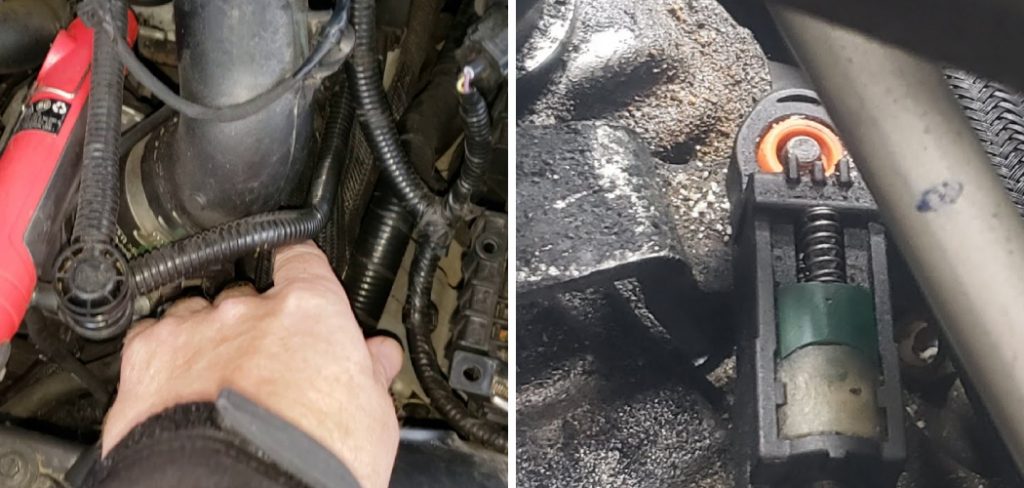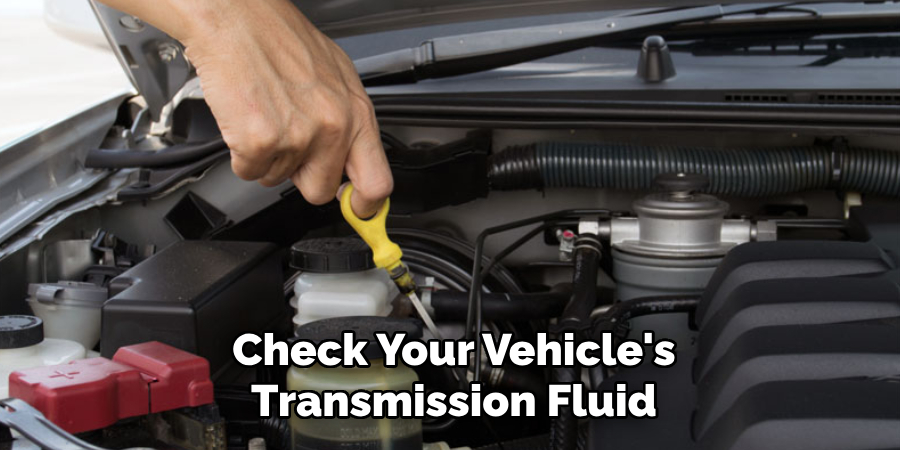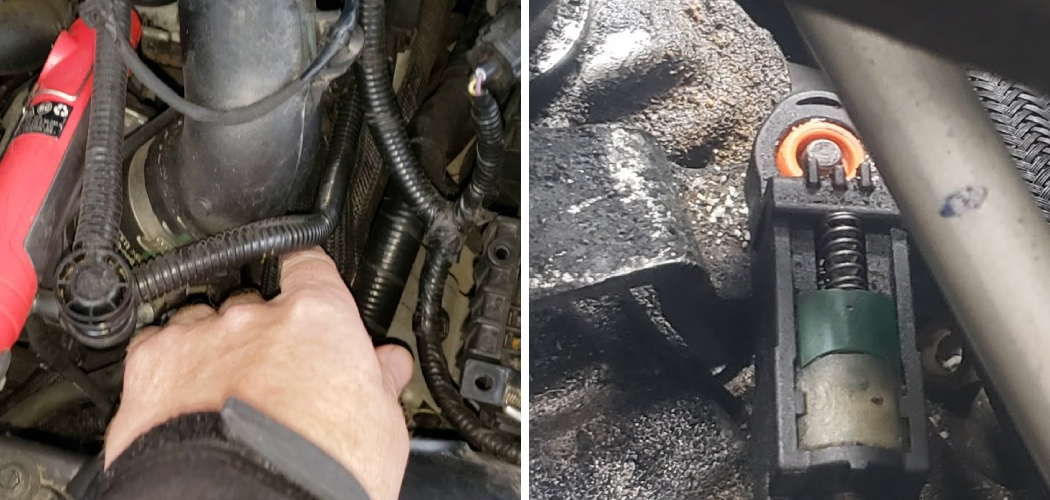Have you ever been stuck on the side of the road with your car’s shift system refusing to cooperate? I know I have – and it’s never a fun experience. Just last month, I was halfway to a job interview when my old Honda Civic started flashing warning lights and refusing to shift out of the park.

After 20 minutes of frantic googling and troubleshooting, the transmission was still frozen up solid. Not wanting to be late, I called a tow truck and prayed it wasn’t anything too serious or expensive. A simple fix was all it took to get me back on the road, though it was still a stressful experience.
In this post, I’ll walk through some of the most common causes of shift system faults and how to fix shift system fault.
What Will You Need?
Before we dive into the nitty-gritty of fixing shift system faults, let’s ensure you have all the necessary tools and materials. Depending on the cause of the issue, you may need some or all of these items:
- A car jack
- Jack stands
- Wrench set
- Transmission fluid
- Replacement components (such as a solenoid or valve)
- Transmission filter
- Gasket sealer
Now that you have all your tools ready let’s get started.
8 Easy Steps on How to Fix Shift System Fault
Step 1: Identify the Issue
The first step in fixing any problem is identifying the root cause. So if your shift system is acting up, start by paying attention to the symptoms. Is it refusing to shift into certain gears, or is it unable to? Do you notice any grinding noises when you try to shift, or is there a delay in gear engagement?

These observations could provide clues about the underlying problem, whether it’s a faulty solenoid, a low transmission fluid level, or a damaged transmission filter. Remember, it’s crucial to accurately diagnose the issue to ensure that the right fix is implemented.
Step 2: Check the Transmission Fluid
The second step to fix a shift system fault is to check the transmission fluid. This is relatively simple to do. Start your car and let it run until it reaches the average operating temperature. Once the engine is warm, locate the transmission fluid dipstick (it’s usually brightly colored and might be labeled). Pull out the dipstick, wipe it clean, and then reinsert it.
Pull it out again and check the fluid level and its color. The fluid should be red and reach the “full” mark on the dipstick. If it’s low or if the fluid is dark or dirty, you need to add or change the fluid. Remember to use the recommended transmission fluid for your specific vehicle model.
Step 3: Replace the Transmission Fluid and Filter
If adding or changing the fluid does not resolve the issue, the next step is to replace the transmission fluid and filter. Begin by jacking up your car and placing it on jack stands for safety. Place a drain pan under the transmission pan and slowly unscrew the bolts to allow the old fluid to drain out.

Remove the old filter replace it with a new one, and install a new gasket with gasket sealer to prevent leaks. Refill the transmission with the recommended type and amount of fluid. Start your engine and allow it to run for a few minutes, then recheck the fluid level. If the shift system fault persists, it may indicate a more severe problem.
Step 4: Inspect the Shift Solenoid
If the transmission fluid and filter are in good condition, the shift solenoid might be the culprit. The solenoid controls fluid flow throughout the transmission, and if it’s malfunctioning, it could cause a shift system fault. To inspect the solenoid, you’ll need to locate it first. Usually, it’s found inside the transmission pan. Remove the pan as you did while replacing the fluid and filter, and you should see the solenoids attached to the valve body.
Refer to your vehicle’s manual if you’re having trouble locating them. Once you’ve found them, check for any signs of damage or corrosion. If you find a faulty solenoid, it’s best to replace all of them at once, even if only one is causing problems, as the others are likely to fail soon. After replacing the solenoids, reassemble your transmission, refill the fluid, and test your vehicle to see if the problem persists.
Step 5: Inspect the Shift Cable
If the problem still persists even after inspecting and replacing the solenoids, then the issue could be with the shift cable. This cable connects the gear shifter in your car to the transmission and allows you to change gears manually. If it’s damaged or disconnected, it could be causing your shift system fault. To inspect the shift cable, you’ll need to locate it.

It usually runs from the base of your gear shifter to the transmission. Check the cable for any signs of damage, wear, or disconnection. If any issues are found, the shift cable must be replaced. After replacement, test your vehicle again to see if the problem has been resolved.
Step 6: Check the Transmission Control Module
The Transmission Control Module (TCM) is like the brain of your transmission, controlling the shifting of gears. If it is faulty, it could be causing your shift system fault. The TCM is usually located in the console area or under the dashboard. You must refer to your vehicle’s manual for the exact location. To test the TCM, you’ll need a diagnostic tool.
Connect the tool to the OBD II port in your vehicle, usually located under the dashboard. Turn on the ignition, but don’t start the engine. The tool will then read any fault codes from the TCM. If there are any codes related to the TCM, it may need to be replaced or repaired. After addressing the TCM problem, test the vehicle again to see if the problem is resolved.
Step 7: Inspect the Valve Body
The valve body of a transmission controls the flow of hydraulic fluid to the clutches and bands, which in turn control gear shifting. If the valve body malfunctions, it could cause shift system faults. The valve body is usually inside the transmission and can be accessed by removing the pan. Once you get to the valve body, look for signs of damage or blockages.

However, this is a complex component, and if you need more confidence in handling it, it might be safer to take your vehicle to a professional mechanic for this step. If the valve body is the issue, it may need to be replaced or rebuilt. After addressing any issues with the valve body, refill the transmission fluid and test drive your vehicle again to see if the problem has been resolved.
Step 8: Consult a Professional Mechanic
If the shift system fault persists despite all your efforts, it’s time to consult a professional mechanic. Persistent issues may indicate a more severe problem with your vehicle’s transmission that requires professional expertise to diagnose and fix. Remember, working with the information can be complex and, if done incorrectly, can lead to more problems.
A certified mechanic has the tools, knowledge, and experience to accurately diagnose the problem and implement the proper fix. Remember to inform them about all the steps you’ve taken so far, as this information could be crucial in their diagnostic process.
By following these steps, you can effectively troubleshoot and fix a shift system fault. Regularly maintaining your vehicle’s transmission can prevent such issues from arising in the first place.
5 Additional Tips and Tricks
- Stay Informed About Your Vehicle: Always refer to your vehicle’s manual and stay updated about the recommended maintenance practices. This knowledge can help detect any possible shift system faults early.
- Regular Maintenance: Regularly check your vehicle’s transmission fluid regularly and get your car serviced at the recommended intervals. This can help in preventing the occurrence of many transmission-related faults.
- Use of Diagnostic Tools: Invest in a reliable diagnostic tool. It can be an invaluable resource in identifying issues in your vehicle’s transmission control module (TCM) and other parts.
- Choosing the Right Transmission Fluid: Always use your vehicle’s recommended type of transmission fluid. Using the wrong type can lead to shift system faults and other issues.
- Professional Assistance: Don’t hesitate to seek professional help if you need help fixing the shift system fault yourself. Sometimes, it’s safer and more cost-effective to let the professionals handle complex vehicle issues.

With these tips and tricks, you can not only fix a shift system fault but also prevent it from occurring in the future.
5 Things You Should Avoid
- Ignoring Warning Signs: Don’t overlook any unusual behavior in your vehicle, such as difficulty in shifting gears, delayed engagement, or transmission slipping. These could be early indications of a shift system fault.
- Skipping Regular Maintenance: Avoid missing your vehicle’s scheduled maintenance. Regular servicing can catch minor issues before they become major ones, saving you from costly repairs.
- Using Wrong Transmission Fluid: Using the wrong type of transmission fluid can damage transmission and shift system faults. Always ensure you’re using the recommended type for your vehicle.
- Attempting Complex Repairs Without Proper Knowledge: Reproducing complex components like the valve body or the TCM without the necessary expertise can lead to further damage. If you need more clarification, always seek professional help.
- Neglecting the Use of Diagnostic Tools: Neglecting to use a diagnostic tool when a fault occurs can lead to misdiagnosis and incorrect repairs. Always use a diagnostic tool to determine the cause of the fault accurately.
By avoiding these common mistakes, you can maintain your vehicle’s transmission effectively and prevent shift system faults.
Conclusion
In conclusion, how to fix shift system fault may seem daunting and complicated, but with the proper knowledge and tools, you can easily troubleshoot and solve it. Remember always to check for common causes, such as power outages or mechanical failures, and maintain your equipment properly.
By implementing some of the tips mentioned in this post, you can reduce the frequency of shift system faults and increase the efficiency of your operations. Be bold and ask for help from experienced professionals or consult online resources when needed.
And most importantly, remember the importance of regular inspections and software updates to prevent any potential issues in the future. With these steps in mind, you’ll be well-equipped to handle any shift system fault that comes your way.
So go ahead and put these solutions into practice, and watch your production processes run smoothly without any interruptions.

